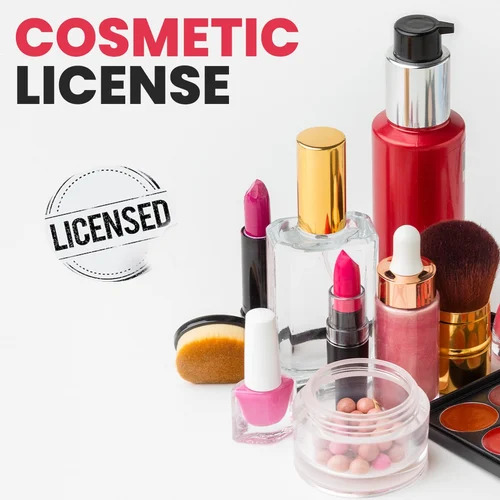
Introduction to Design Registration
In today’s highly competitive market, it has become imperative for businesses to protect their intellectual property to gain a competitive edge. One such crucial aspect of intellectual property protection is design registration. Design registration provides legal protection for the unique visual appearance of a product, ensuring that it is not copied or imitated by others. In this article, we will delve into the importance of design registration in India and how it can help businesses stay ahead in the competitive market.
Understanding the importance of design registration
Design registration is the process of securing exclusive rights over the visual design elements of a product. It grants the owner the right to prevent others from using, selling, or manufacturing products that infringe upon the registered design. This protection is essential as it safeguards the investments made in the creation and development of a unique design. By registering their designs, businesses can establish their ownership and prevent others from capitalizing on their innovative designs.
Furthermore, design registration enhances the credibility of a business and its products. It sends a signal to consumers that the design is original and distinct, increasing their confidence in the brand. This can result in a competitive advantage, as consumers are more likely to choose products that are associated with creativity and uniqueness. Design registration also provides legal recourse in case of infringement, allowing businesses to take action against those who copy or imitate their designs.
Key benefits of design registration
Design registration offers several key benefits to businesses. Firstly, it provides exclusive rights, allowing the owner to control the use and reproduction of the registered design. This exclusivity can be a valuable asset in a competitive market, as it prevents competitors from capitalizing on the unique features of a design.
Secondly, design registration enhances the commercial value of a product. Registered designs are considered valuable intellectual property assets and can be licensed or sold to generate additional revenue for the business. This can be particularly beneficial for small businesses and startups, as it provides an opportunity to monetize their designs and gain a competitive edge.
Lastly, design registration acts as a deterrent against infringement. The existence of a registered design serves as a warning to potential infringers, as they would be aware of the legal consequences of copying or imitating the design. This can help protect the market share of a business and maintain its competitive position.
Overview of the Registered Designs Act in India
The Registered Designs Act governs the registration of designs in India. This legislation provides a framework for the registration and protection of designs. It defines a design as the features of shape, configuration, pattern, ornament, or composition of lines or colors applied to any article, whether in two-dimensional or three-dimensional form. The Registered Designs Act establishes the rights and obligations of design owners, as well as the procedures for registration and enforcement.
Under the Registered Designs Act, a design can be registered if it is new or original, not previously published or disclosed to the public, and has not been registered in India or any other nation before the application deadline. The Act also specifies the duration of design registration, which is initially ten years from the date of registration, extendable for a further period of five years.
Exploring the rights conferred by a registered design
Registration of a design confers certain exclusive rights to the owner. These rights include the right to reproduce the design, the right to use the design for commercial purposes, and the right to prevent others from using or imitating the design without permission. These rights provide the legal framework for design owners to protect their designs and prevent unauthorized use or reproduction.
It is important to note that design registration only protects the visual appearance of a product and not its functionality. Functional aspects of a product may be protected under other forms of intellectual property such as patents. However, design registration can be a valuable tool in complementing other forms of IP protection and ensuring comprehensive safeguarding of a product.
Step-by-step process of registration of design in India
The registration process for designs in India involves several steps. The first step is to file an application with the Design Office of the Indian Patent Office. The application should include representations of the design, a statement of novelty, and the prescribed fee. Upon receipt of the application, the Design Office conducts an examination to ensure compliance with the requirements of the Registered Designs Act.
If the application is found to be in order, it proceeds to the next stage, which involves publication in the Official Designs Journal. This publication serves as notice to the public of the existence of the design and allows interested parties to file opposition within the prescribed period. If no opposition is filed, or if the opposition is decided in favor of the applicant, the design is registered, and a certificate of registration is issued.
Common misconceptions about design registration
Despite the importance of design registration, there are some common misconceptions surrounding the process. One such misconception is that copyright protection is sufficient to safeguard a design. While copyright protects original works of authorship, including artistic creations, it does not provide the same level of protection as design registration. Copyright protects the expression of an idea, whereas design registration protects the visual appearance of a product.
Another misconception is that design registration is a complicated and time-consuming process. While the registration process does involve certain formalities, it can be navigated smoothly with the assistance of legal professionals specializing in intellectual property. Seeking legal guidance can help businesses understand the requirements, prepare the necessary documentation, and ensure compliance with the relevant laws and regulations.
Important factors to consider before filing for design registration
Before filing for design registration, there are several important factors that businesses should consider. Firstly, it is crucial to conduct a thorough search to ensure that the design is novel and not already registered or in the public domain. This search helps identify any existing designs that may pose obstacles to registration.
Secondly, businesses should carefully assess the commercial viability of the design. This includes evaluating the market demand for the product, the potential for revenue generation, and the competitive landscape. Understanding the commercial aspects of the design can help businesses make informed decisions regarding design registration.
Lastly, it is advisable to seek legal assistance from professionals specializing in intellectual property law. Legal experts can provide guidance on the registration process, help with the preparation and filing of the application, and offer ongoing support and advice on intellectual property matters.
Seeking legal assistance for design registration
Given the complexities and nuances of design registration, seeking legal assistance is highly recommended. Intellectual property law firms have expertise in handling design registration matters and can provide valuable guidance throughout the process. They can help businesses understand the legal requirements, conduct comprehensive searches, prepare the necessary documentation, and ensure compliance with the relevant laws and regulations.
Legal professionals can also assist in enforcing design rights and taking action against infringers. In case of any infringement or unauthorized use of a registered design, legal experts can guide businesses on the appropriate course of action, including sending cease and desist letters, filing infringement suits, and seeking remedies under the law.
Conclusion: Why design registration is crucial for staying ahead in the competitive market
In conclusion, design registration plays a pivotal role in today’s competitive market. By protecting the unique visual appearance of a product, design registration enables businesses to establish their ownership, enhance their credibility, and prevent others from copying or imitating their designs. The benefits of design registration extend beyond legal protection, as it can add commercial value, act as a deterrent against infringement, and provide a competitive edge.
To ensure a smooth and successful design registration process, businesses should consider seeking legal assistance from professionals specializing in intellectual property law. Legal experts can guide businesses through the intricacies of design registration, help with the necessary documentation, and provide ongoing support for intellectual property matters.
In a fast-paced and ever-evolving market, staying ahead requires not only innovation but also effective protection of intellectual property. Design registration is a powerful tool that can help businesses safeguard their designs, differentiate themselves from competitors, and secure a strong position in the marketplace. By investing in design registration, businesses can pave the way for long-term success and growth.









